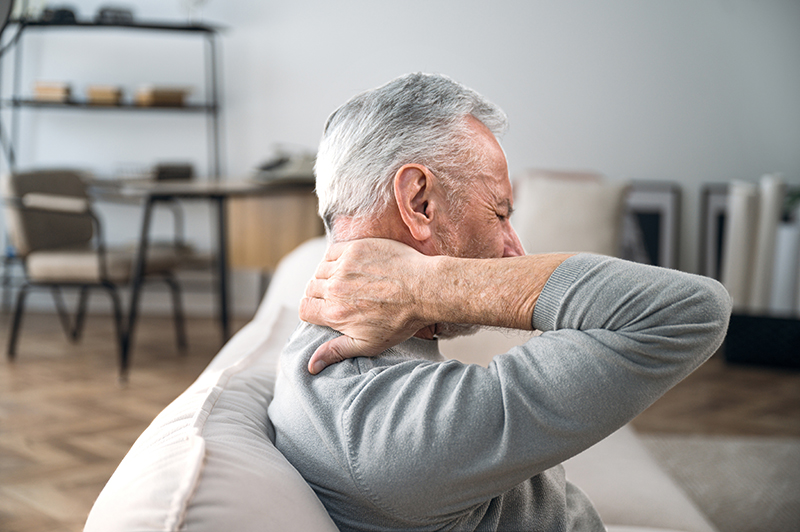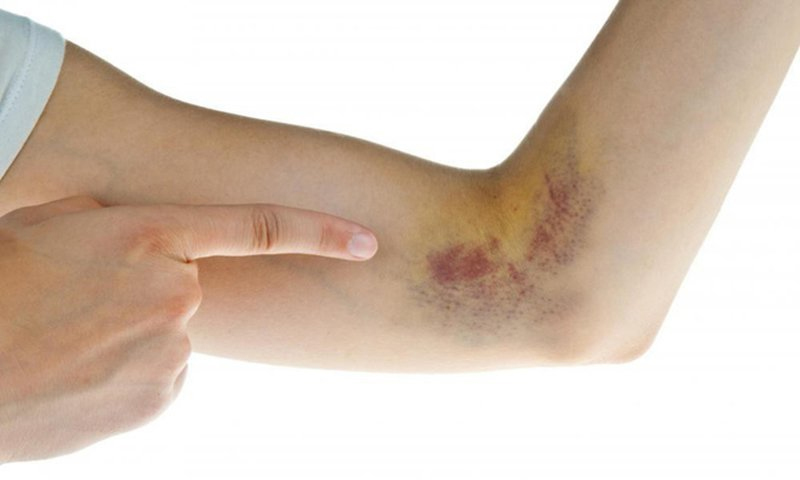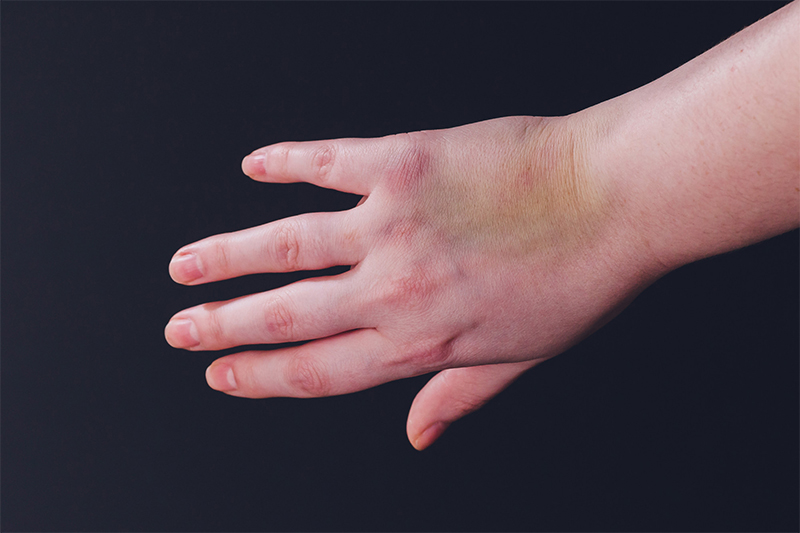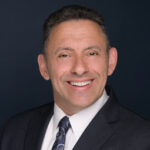An Overview of Soft Tissue Injuries
Soft tissue injuries are common in rear-end collisions and can lead to long-term pain and medical treatment. These injuries involve damage to the soft tissues of the body, including:

These injuries may require medical attention, physical therapy, and prolonged recovery time.
How Does Rear-End Collision Cause Soft Tissue Injuries?
Rear-end collisions can cause a wide range of significant soft tissue injuries due to the mechanics of the impact and the resulting trauma to the body. When a vehicle is struck from behind, the sudden force propels the body forward, causing the neck and upper body to jolt violently. This abrupt movement can strain and damage the soft tissues, including muscles, ligaments, and tendons.
The neck, specifically the cervical spine, is particularly susceptible to soft tissue injuries in rear-end collisions. Whiplash, one of the most common soft tissue injuries, occurs when the head is forcefully jerked backward and then forward in a whip-like motion. This can cause damage to the muscles and ligaments in the neck, leading to inflammation, pain, and limited range of motion.
Other areas of the body that are prone to soft tissue injuries in rear-end collisions include the back, shoulders, and wrists. Muscle strains, sprained ligaments, and tendon injuries can occur as a result of the impact and sudden movements during the collision.

Types of Soft Tissue Injuries
Contusions
Contusions, also referred to as bruises, are the result of direct impacts from blunt objects, which cause harm to muscle fibers and connective tissue without breaking the skin.
According to a recent study on upper extremity injuries and infections treated in emergency departments in the United States, the majority (37%) were soft tissue contusions. [1]

One of the primary symptoms of contusions is discoloration of the skin caused by blood pooling around the injury. Initially, the affected area may appear red or purplish as blood vessels are damaged and leak blood into the surrounding tissues. Over time, the bruise may change color, turning blue, green, and finally yellow as the body breaks down and reabsorbs the blood.
Contusions are often accompanied by chronic pain and can limit the range of motion in the affected area. Swelling, tenderness, and stiffness may also be present. In most cases, contusions heal on their own with time and require only basic home care, such as rest, ice, compression, and elevation.
Sprains
Sprains are a common type of soft tissue injury that can occur during rear-end collisions. They occur when the ligaments, which are tough bands of connective tissue that connect bones to each other, are stretched or torn. The severity of sprains can vary, depending on the extent of stretching or tearing.
There are three grades of sprains:
Treatment options for sprains may include the RICE protocol, which stands for rest, ice, compression, and elevation. [2]
Resting the affected area allows for healing, while ice helps reduce swelling and pain. Compression with a bandage or brace and elevating the injured area may further aid in reducing inflammation and swelling.
Strains
Strains are a common type of soft tissue injury that can occur as a result of rear-end collisions. They are caused by the stretching or tearing of muscles or tendons, which connect muscles to bones. This can happen when the body experiences sudden, forceful movements during a car accident.
Common areas of the body where strains can occur in rear-end collisions include the neck, upper back, and lower back. The force of the impact can cause the muscles and tendons in these areas to stretch beyond their normal capacity, leading to injury.
Tendonitis
Tendonitis is a common soft tissue injury that can occur after a car accident, particularly in rear-end collisions. This type of injury involves the inflammation of a tendon, which is the tissue that connects muscles to bones.
One of the main symptoms of tendonitis is pain, and individuals may experience swelling and tenderness in the affected area. The inflammation can also cause a limited range of motion, making it difficult for individuals to move or perform certain activities.

Bursitis
Bursitis is a medical condition where the bursa, a sac filled with fluid that acts as a cushion between bones, tendons, and muscles, becomes inflamed. It can occur due to excessive use or direct injury to a joint, and commonly affects areas like the shoulder, elbow, knee, hip, ankle, and foot.
When the bursa becomes inflamed, individuals may experience pain, swelling, and tenderness in the affected area. The pain can range from mild discomfort to severe pain, depending on the extent of the inflammation. Movement or pressure on the affected joint may worsen the symptoms.
Timely and appropriate treatment is essential for individuals with bursitis. Treatment options include rest, compression, elevation, and the use of anti-inflammatory medication to reduce pain and inflammation. Applying ice packs to the affected area can also help alleviate symptoms.

Whiplash
Whiplash is a common neck injury that occurs when the head forcefully jerks back and forth in a rapid motion. It is often associated with rear-end collisions or any impact that causes the neck to hyperextend. The sudden movement strains and damages the soft tissues in the neck, including muscles, ligaments, and tendons.
The symptoms of whiplash can vary in severity and may not always appear immediately after the accident. Common symptoms include neck pain and stiffness, headaches, dizziness, fatigue, and difficulty concentrating. Some individuals may also experience shoulder pain, muscle spasms, or limited range of motion in the neck.
While most cases of whiplash injuries resolve within a few weeks or months with appropriate treatment, complications can arise in some instances. Chronic neck pain, ongoing headaches, and persistent muscle weakness or stiffness can significantly impact an individual’s daily life. Whiplash-associated disorder, a term used to describe long-lasting and debilitating symptoms, can greatly affect a person’s quality of life.
Hematoma
A hematoma is a common soft tissue injury that can occur as a result of car accidents. It refers to the accumulation of blood outside the blood vessels, typically within the tissues. In car accidents, the sudden deceleration or impact can cause the blood vessels to rupture, leading to the formation of a hematoma.
The causes of hematoma from car accidents include direct trauma or force to the body, such as being struck by a steering wheel or hitting the dashboard. The symptoms of a hematoma may vary depending on its size and location. Common symptoms include localized swelling, pain, bruising, and tenderness. In some cases, the area around the hematoma may also appear discolored.
While most hematomas will resolve on their own with time and rest, complications can arise in certain situations. Large or deep hematomas may put pressure on surrounding structures, such as nerves or blood vessels, leading to further pain or reduced functionality. In rare cases, an infection may also develop within the hematoma, requiring medical attention.

Avulsions
Avulsions are a type of soft tissue injury that can occur in rear-end collisions. These injuries occur when a piece of soft tissue, such as a muscle or tendon, is completely torn from its attachment to bone. Rear-end collisions can cause the body to undergo sudden and forceful movements, leading to the tearing of soft tissues.
Avulsions can result in significant pain, limited range of motion, and even functional impairments. When a soft tissue is completely torn from its attachment to bone, it may require medical attention and treatment to heal properly. In some cases, surgery may be necessary to reattach the torn tissue to the bone.
Common symptoms of avulsions include severe pain, swelling, bruising, and difficulty moving the affected body part. It is important to seek immediate medical attention if avulsions are suspected, as early intervention can help prevent further damage and promote proper healing.
Symptoms of Soft Tissue Injuries
Soft tissue injuries, such as those that can occur after an auto accident, can cause various symptoms that can greatly impact a person’s daily life. Here are common symptoms of soft tissue injuries:

If you’ve been involved in a car accident and are experiencing any of these symptoms, promptly seek the service of an experienced medical professional. Early diagnosis and proper treatment can help prevent further complications and improve the chances of a full recovery.
You can also contact Goldberg & Loren, a personal injury law firm, for a free consultation on how to get maximum compensation through a soft tissue injury claim.
Sources:
[1] Lese, A. B. (n.d.). Soft Tissue Injuries of the Hand: Practice Essentials, Pathophysiology. https://emedicine.medscape.com/article/826498-overview
[2] What is the RICE method for injuries? (2023, July 26). https://www.medicalnewstoday.com/articles/321469

